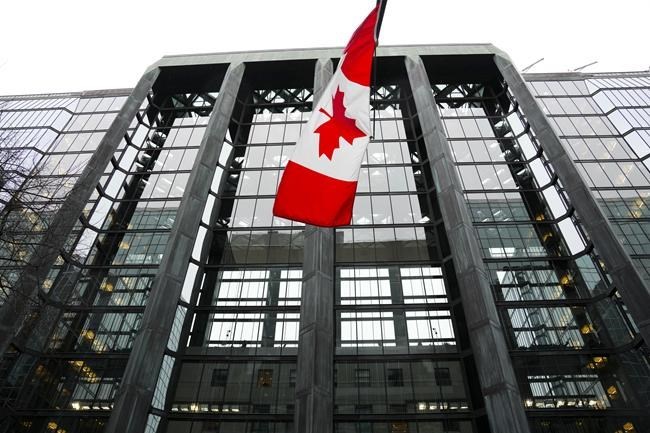TORONTO — Early signs of wage growth slowing are an indicator the Bank of Canada’s fight against inflation is slowly gaining ground, economists said, but it’s too soon to tell whether Canadians will regain the purchasing power they lost amid sustained price growth.
“If wage growth is going to cool, then we better see inflation come down even faster,” said Brendon Bernard, senior economist with job site Indeed.
Otherwise, workers won’t make up that lost ground, he said.
“It's a bit of a tug of war between the two.”
Wage growth is just one factor the Bank of Canada is eyeing in its ongoing fight against inflation, said BMO economist Shelly Kaushik.
“We are seeing a bit of a slowdown in broader economic activity. We are starting to see demand for labour, demand for some goods and services, starting to step down,” she said.
“That's all in line with what the bank wants to see, to help cool those inflation pressures.”
On Friday, Statistics Canada said the economy was essentially unchanged in April, neither growing nor shrinking.
Inflation peaked last June at more than eight per cent and has been moderating ever since, coming in at 3.4 per cent in May. The central bank is targeting roughly two per cent for inflation, said Kaushik, and ideally wage growth would more or less match inflation.
Wages grew 5.1 per cent in May, year-over-year, slightly slower than 5.2 per cent in April, the month wage growth surpassed inflation, according to Statistics Canada’s labour force survey.
Meanwhile, Statistics Canada’s latest report on payroll employment found that wage growth got stronger in April, but job vacancies declined.
The payroll report provides data at a small lag compared with the labour force survey, but often comes with more nuance, said Kaushik.
CIBC senior economist Andrew Grantham said in a note that the payroll report suggests demand for labour is continuing to cool in line with what the central bank wants to see.
“Evidence from Canadian employers suggests that the labour market may have been cooling earlier and quicker than the more timely labour force survey,” Grantham wrote.
Signs of slowing in the labour market are consistent with the broader economic slowdown expected in the coming months, said BMO's Kaushik.
“But I don't think that that easing of wages is the only thing that needs to happen for inflation to get back to target,” she cautioned.
“More broadly, we are seeing very strong demand still for goods and services, not just for labour. And so I think we need to see cooling in all of these aspects that are still running quite hot in order to get inflation back down to our target.”
Indeed has been tracking posted wages on Canadian job ads, and said wage growth on those postings has cooled somewhat at four per cent in May 2023 down from 5.3 per cent in August of last year.
In a report this week, the company said advertised pay has grown faster among low- and mid-paying job postings, mainly in areas where hiring conditions have been tight, including construction and manufacturing. At the same time, total Canadian job postings on Indeed have also slowed, the company said.
Indeed's Bernard said job postings in many areas are still above pre-pandemic levels, but have come down noticeably from earlier highs.
He said there seems to be hope for what he called “immaculate disinflation,” where inflation comes down but the labour market stays in good shape.
The Canadian Federation of Independent Business has also noticed some easing on wage pressures. In a Thursday report, the organization said businesses’ expectations for wage and price increases are cooling.
A report from the Bank of Canada on Friday seemed to support this. The central bank’s business outlook survey found that businesses continue to see larger-than-normal wage and price increases ahead, but their expectations are moving closer to what they were before the pandemic.
The data so far points to another potential hike in rates from the central bank in July, said Kaushik, though she said it's not a done deal.
Of course, many Canadians are seeking for their pay to catch up to last year’s breakneck inflation pace, said Bernard, which is why wage growth accelerated in the wake of rising prices.
But there is a worry among economists that if higher wage growth becomes sustained, it may actually drive inflation as businesses raise prices to deal with rising labour costs, Kaushik said — the dreaded wage-price spiral.
In a note Friday, RBC’s Nathan Janzen and Carrie Freestone said all eyes will be on the labour force survey at the end of this week as the central bank weighs its July decision.
“Though there are signs that labour markets are softening, the unemployment rate is still historically very low,” they said.
“Economic momentum has likely been too firm for the (central bank) to change course just yet.”
This report by The Canadian Press was first published June 4, 2023.
Rosa Saba, The Canadian Press


